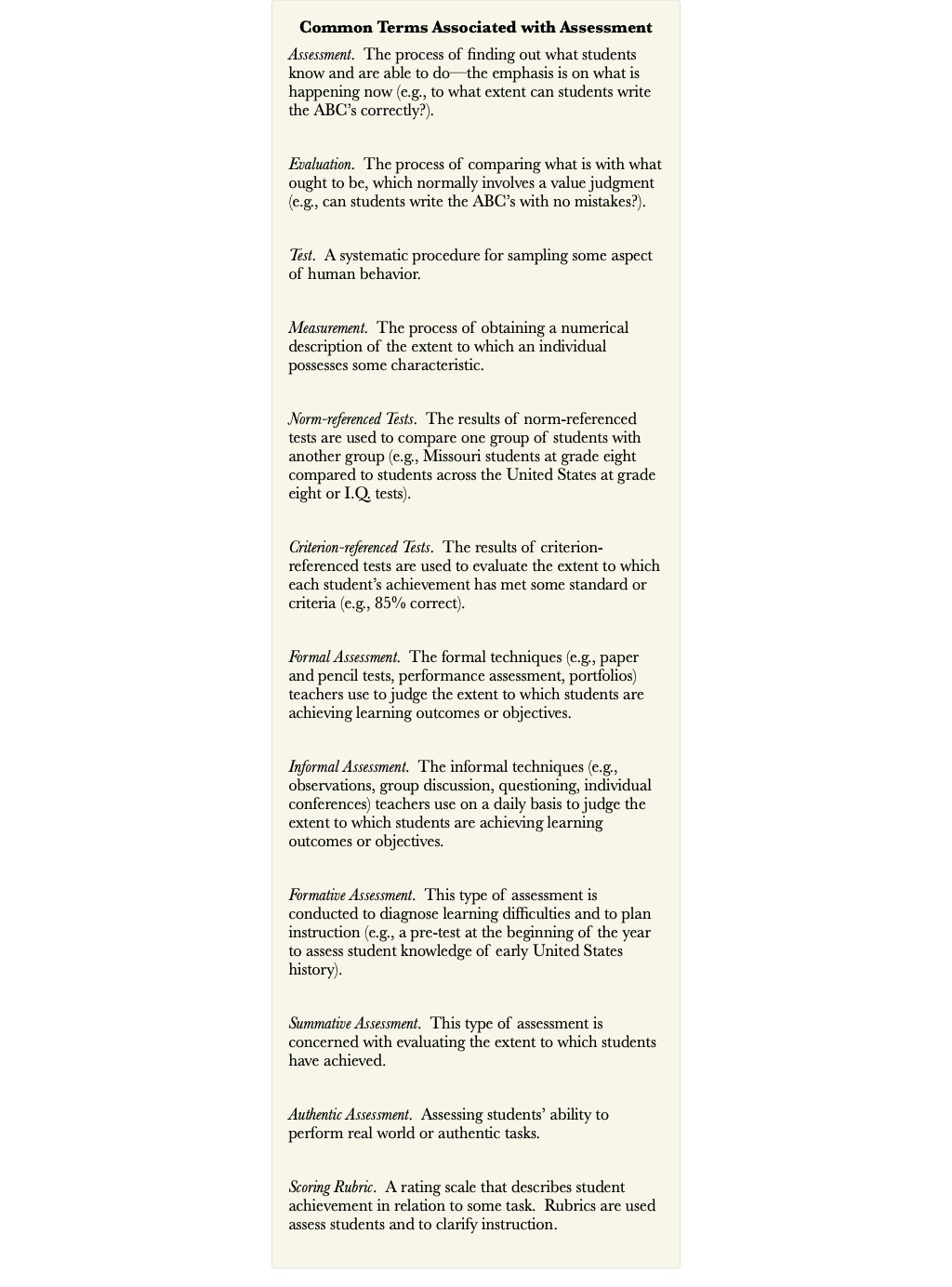4 Instruction
Literacy Lesson Considerations
Classroom teachers must find ways to teach–to assist students in understanding the content. As you consider your instruction, you will need to also consider diversity, the various needs of your learners, as well as your district’s standards.
Section 1: Standards-Based Instruction
Several years ago, school districts across the nation shifted to Common Core Standards, now often seen in a modified version that reflects state input. Kansas State Department of Education (KSDE) refers to their state standards, which was originally influenced by Common Core, as Kansas College and Career Ready Standards (KCCRS).
While you are probably aware of your content standards, you need to pay particular attention to the literacy standards that are now connected to the various content areas. No longer is it an English-classroom-only expectation. Today, science teachers, math teachers, art teachers and others are all required to address literacy standards as part of their classroom instruction.
Here’s a link to the KSDE website with general KCCRS information: KCCRS.
State standards are working literacy standards in the contents. To demonstrate how those two can be combined, here is an earlier document that demonstrates the possibilities: Literacy in KCCRS. While this is an earlier document and standards are often revisited and revised, this provides examples of how literacy can be woven into the various contents.
P21
In addition to Common Core, P21 emerged as a national nonprofit organization pushing for 21st Century readiness for students in the education system. With emphasis on the changing work environment, the group focuses on the global and digital needs of today’s students.
For more information, here’s a link to P21’s website and its Frequently Asked Questions page: P21.
This, of course, gives you, the classroom teacher, two ideas to contemplate–and be ready to discuss with administrators, parents, students, and community members:
- How does your content area connect to the 21st Century skills needed?
- How are you addressing 21st Century skills in your classroom, while ALSO addressing your content standards?
Section 2: Fostering Diverse Perspectives
As we move through this text, we’ve addressed a variety of literacy issues. Sprinkled throughout are Student Spotlights, where we highlight stories of students.
While these stories are fictitious, they are based on students veteran teachers have had in their own classrooms. Likewise, the issues we’ve presented are also founded in reality.
Some of you reading these may see some of yourself in the student descriptions; others may not. Either way, though, we must encourage and build upon the diversity that will exist in our classrooms.
Culturally Responsive Literacy Instruction
It is important that we teachers consider each and every student who is in our classroom and truly understand the diversity that exists. Classroom teachers are seeing an increased need to assist English Language Learners–individuals with varying amounts of English language skills who find themselves in an English-speaking school.
Here’s an article from Academia.edu that addresses content area literacy instruction for adolescent ELLs:
One approach to help ELLs is through project-based learning. The Teaching Channel offers this brief video that demonstrates the value of learning through project to not only increase content knowledge but also language skills. Here’s the link:
Despite being specific to the science classroom, this video should provide some ideas for your own class.
Instead of routine lecture, can you turn that approach into something more meaningful for your ELLs AND others in your classroom?
 ELL Specialists
ELL Specialists
Many of the schools today are fortunate to have ELL specialists–educators who focus specifically on helping ELLs be successful in the classroom.
For some districts, an ELL staff is available to assist. In smaller districts, it may be a classroom teacher who has an English as a Second Language endorsement and is given a specific amount of release time from his or her other teaching duties to work with ELLs. Those positions are expanding as the need for ELL support increases.
Whatever the availability, we encourage you to take advantage of this valuable resource. An ELL specialist can provide meaningful support that can impact you, as well as your students.
Section 3: New Literacies
Today, as we examine literacy in our classroom, we’re talking about a growing number of possible approaches–New Literacies–thanks to continual developments in technology.
Juxtaposing Culture/Content/Literacy
Because of this, we need to make sure we’re considering all the options as we implement literacy skills in our classes–and using them to our full advantage.
As students’ interests grow in this broadening collection of technology, we can use them to advance the engagement in and understanding of our content area.
First, let’s watch a quick video that highlights the three categories of new literacies and the depth of that literacy knowledge:
Likewise, we provide a link to an article that examines how to support adolescent learners regarding inquiry:
Teaming Up Texts
Sometimes pairing one text with another–at a varying reading level or genre–can help students comprehend the information and possibly address the more difficult text more successfully.
Author Deanne Camp writes about how pairing fiction and nonfiction can benefit a student’s comprehension of the information while increasing his or her engagement. Follow the link to read her article:
We would suggest not only pairing other print texts, but also consider teaming a traditional text with a digital one–to take advantage of their interest in the expanding field of technology.
Section 4: Differentiated Literacy Instruction
Just as every student in your classroom will be unique, so will his or her needs for literacy instruction. As we determine our students’s needs, we should also determine approaches that will help each one be successful.
In this section, we’ll discuss approaches for a variety of levels of student readers, from struggling readers to ELL students to excelling readers.
For example, William Brozo, a professor at George Mason University, believes educators need to take different approaches to help adolescent males succeed in regard to literacy.
In his work, he has focused primarily on adolescent males, which research shows struggle with literacy during their middle school and high school years. Here’s a brief interview with Brozo, sharing his insight based on his years of research. He shares some of the struggles male students have and ways for teachers to help them achieve. The interview is several years old, but his message is as important today as it was originally.
As you watch this clip, be thinking about what you’ve seen in classrooms regarding boys and reading or what you may have experienced yourself.
- If you, as an adolescent male, became less interested in reading, what could have helped you stay on track to improve your literary skills?
- What do you plan to do to help students in similar situations?
As students are unique, so are their literary skills. In a classroom, you can have an extremely wide range of reading and comprehension abilities. Your room will, most likely, have struggling readers, ELL students, and excelling readers…and every level in between.
Supporting Struggling Readers
First and foremost, we avoid the term “non-readers,” as we believe all students are readers; it’s just that some haven’t found that one text–the one that engages them so that they want to read more.
 It’s not a case of NOT reading, but not WANTING to read, often because they’re not excited about what we’re asking them to read or because they haven’t experienced success previously in reading. Therefore, we need to look at all sorts of options (thus, our wide-range definition of “texts” used in this class).
It’s not a case of NOT reading, but not WANTING to read, often because they’re not excited about what we’re asking them to read or because they haven’t experienced success previously in reading. Therefore, we need to look at all sorts of options (thus, our wide-range definition of “texts” used in this class).
Struggling readers may require more assistance as they approach texts. Consider providing graphic organizers to help them along. We encourage you to let your students experiment with different types of graphic organizers, so they get find one or two options they feel most useful. We would also encourage you to have various graphic organizer options available so students can pick them up to use, rather than your having to make them a required assignment. The idea is to get students to see these as useful tools, rather than busy work, and to help them see the value of those tools for their own success.
They will probably also need to take advantage of some of the before/during/after strategies we’ve discussed. It’s all about giving them the support they need to feel more confident approaching texts…in your classroom and in others, as well.
Struggling English Language Learners
ELLs can also make use of the approaches we’ve listed in the Struggling Readers category. It is important that you not force them to “abandon” their first language in your classroom; instead, use the language they are most comfortable with as a way to support their efforts to learn English.
Challenging Excelling Readers
To avoid hearing the phrase, “I’m not challenged in your class,” encourage your upper level readers to challenge themselves.
This can include attempting higher level texts, but keep in mind they may face difficulties they haven’t experienced for some time. Therefore, they’ll need support, and you’ll need to make sure they feel comfortable using your resources. You can also challenge them to find other related texts–digital and otherwise, or provide options for a more extensive project on the topic.
Literacy Specialists and Reading Coaches
As more and more districts are providing ELL specialists, many are also adding literacy specialists and reading coaches.
Designed to assist classroom teachers (and their students) with literacy, these positions are held by individuals who can offer resources and ideas. It’s important that you look to these specialists and coaches as educators who are to help you be more successful which, in turn, helps your students succeed. We encourage you to take advantage of their expertise.
Assessment
We also need to keep in mind our students’ literacy skills when it comes to assessment. Too often, the assessments we give are more of a reading assessment than an assessment of the content knowledge. That’s fine, if you’re trying to assess their reading skills, but usually that’s not the case.
Before we decide on an assessment, let’s consider specifically what we want to assess. With that determined, we must then decide how best to assess that. It’s unfortunate when a struggling reader–who really understands a subject such as math–becomes frustrated because the type of assessment doesn’t let him or her show his knowledge. It’ also unfair to you, the teacher, because it doesn’t give you a clear view of what you’ve actually accomplished by teaching that student.
We’ve included a list of types of assessments, with definitions, to help you think through your selection. It’s important that you not let a student’s reading level be what is most represented by a score on an assessment.

